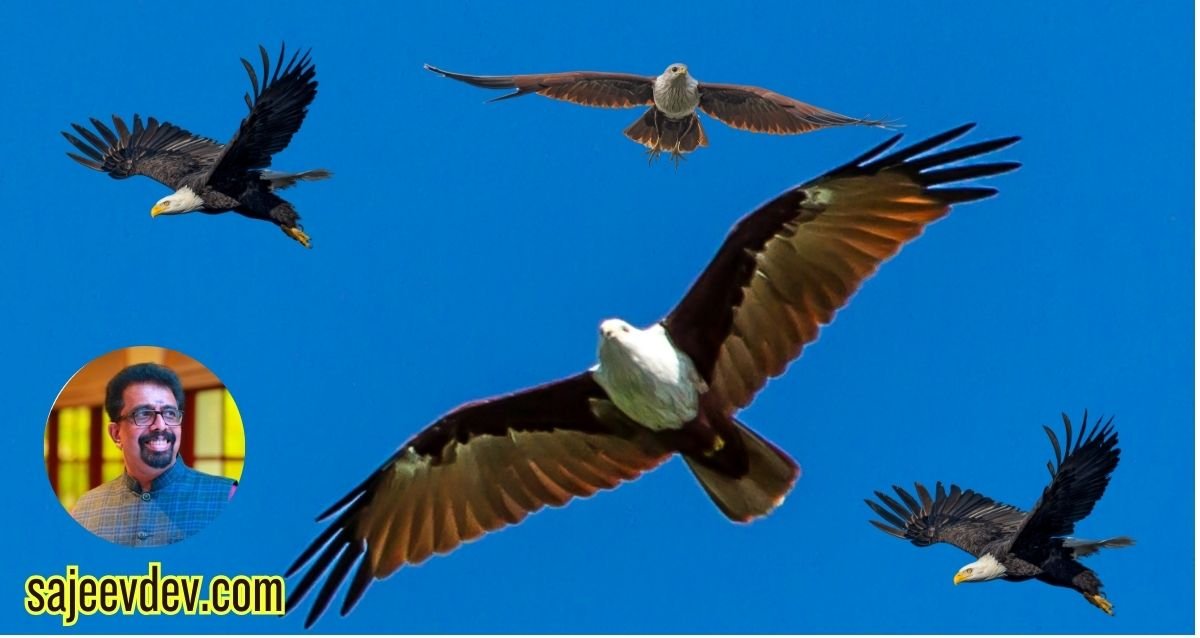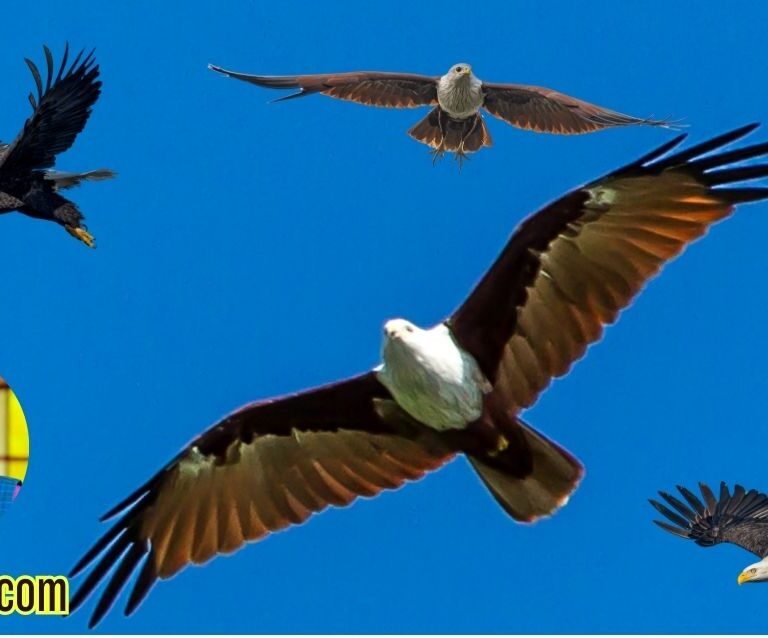The Symbolism of the Eagle
The eagle, a majestic bird of prey, has long been regarded as a potent symbol in various cultures around the world. Renowned for its strength, freedom, and remarkable vision, the eagle embodies traits that are deeply admired and desired in both personal and leadership contexts. It frequently appears in religious and national iconography, serving as a powerful emblem of resilience and inspiration. From ancient civilizations to modern societies, the eagle has captured the human imagination, providing a narrative framework through which enduring values can be articulated.
Strength is a characteristic that sets the eagle apart from other birds. Its impressive wingspan and agility in flight illustrate the essence of physical prowess and determination. Many cultures view the eagle as a representation of power and authority, reinforcing the idea that leadership often requires inner strength and the ability to take decisive action. This symbolism encourages individuals to embrace their challenges and rise above adversity, much like the eagle soaring high above the terrain.
Furthermore, the eagle is synonymous with freedom. Its ability to fly at great altitudes and navigate vast landscapes serves as a metaphor for the pursuit of independence and self-discovery. This connection to freedom urges individuals to break free from constraints, whether they be societal expectations or personal limitations. Embracing the eagle’s freedom can inspire people to seek their own paths, encouraging a sense of adventure and exploration in life.
Finally, the eagle’s exceptional vision symbolizes clarity and foresight. With its keen eyesight, the eagle can spot potential opportunities from afar, making it an ideal metaphor for strategic thinking and planning in both personal development and professional leadership. As individuals strive to cultivate these traits, they can learn invaluable lessons from the eagle, applying its symbolism to achieve their goals and fulfill their potential.
The Eagle’s Vision: Clarity in Leadership
The eagle, renowned for its exceptional eyesight, serves as an inspiring metaphor for leadership and decision-making clarity. This majestic bird possesses the ability to see potential opportunities from several miles away, enabling it to act decisively in pursuit of its goals. In a similar vein, leaders who cultivate a clear and focused vision are better equipped to identify opportunities and discern challenges that may arise within their organizations.
A clear vision provides direction and purpose, allowing leaders to chart a course that aligns with both their goals and the aspirations of their teams. Much like the eagle, which requires an unobstructed view of its surroundings to find food and avoid danger, effective leaders benefit from maintaining a broad and clear perspective. This clarity fosters sharp decision-making and empowers leaders to take well-judged risks, essential components in achieving success.
The ability to see beyond immediate circumstances and recognize the long-term implications of decisions is crucial for effective leadership. In this regard, eagles not only symbolize strength and freedom, but also the foresight needed to navigate complex organizational landscapes. By regularly assessing their surroundings and adjusting their strategies accordingly, leaders can emulate the eagle’s adaptability. This flexibility enhances their capacity to respond to evolving situations while remaining committed to their strategic vision.
Leaders who invest time in refining their vision can create a dynamic environment conducive to innovation and growth. Just as the eagle soars high to gain a panoramic view, leaders are encouraged to elevate their thinking, seeking insights that transcend conventional boundaries. In doing so, they can ensure that their teams remain aligned, motivated, and focused on achieving shared objectives, ultimately leading to sustainable success.
Fearlessness and Courage: The Eagle as a Hunter
The eagle, a symbol of fearlessness and tenacity, showcases remarkable courage in its role as a hunter. With sharp eyesight and unmatched aerial agility, eagles pursue their prey with relentless determination, exemplifying the importance of courage in the pursuit of personal and professional goals. Observing how these majestic birds hunt provides valuable insights for individuals seeking to overcome challenges and achieve success.
In the wild, eagles are not mere opportunistic feeders; they demonstrate a calculated approach that underscores their fearlessness. For example, they often take to great heights to survey vast expanses for potential prey before swooping down with precision. This behavior illustrates the necessity of being proactive rather than reactive. Leaders and individuals alike must similarly develop the courage to assess situations from a strategic vantage point, allowing them to make informed decisions in their own pursuits.
Moreover, the eagle’s hunting technique combines both strength and agility, suggesting that courage often involves a blend of physical and mental fortitude. It is not sufficient to be fearless; individuals must also possess the adaptability to pivot and adjust their strategies in the face of adversity. This duality enables more effective risk-taking, essential for personal growth and the attainment of goals. For instance, successful entrepreneurs often recount stories of near failures that pushed them to innovate and reevaluate their methods, much like eagles that must adapt their hunting tactics when faced with challenges.
Throughout history, countless leaders have drawn inspiration from the eagle’s fearlessness, harnessing this power to confront their own battles. By emulating the courage displayed by these majestic creatures, individuals can foster a mindset of resilience and tenacity, key attributes that drive them to face challenges head-on. The lesson is clear: to achieve one’s aspirations, cultivating fearlessness and courage is paramount, as exemplified by the eagle’s untamed spirit in the pursuit of its goals.
Adaptability: Navigating Change Like an Eagle
The eagle is often lauded for its impressive ability to adapt to dynamic environmental conditions. In the wild, these majestic birds possess a keen sense of awareness, enabling them to respond to changing weather patterns and fluctuating prey availability. This remarkable adaptability is not merely instinctual; it stems from a strategic approach to survival, which can be mirrored in leadership and personal development. Leaders who embrace adaptability are better equipped to face challenges and capitalize on emerging opportunities, paralleling the eagle’s flight through turbulent skies.
In navigating change, the concept of flexibility becomes crucial. Organizations and leaders must foster environments where adaptability is encouraged, as it leads to resilience against setbacks. A prime example of this in action is Satya Nadella, the CEO of Microsoft, who has guided the company through significant transformations. Under his leadership, Microsoft successfully pivoted towards cloud computing, embracing change rather than resisting it. This strategic adaptability not only revitalized the company’s market position but also demonstrated how agile thinking can propel an organization forward in a competitive landscape.
Moreover, the importance of adaptable strategies extends beyond corporate leadership. It resonates deeply within personal and professional arenas, where individuals often encounter unforeseen challenges. Consider the adaptability shown by Malala Yousafzai, who, despite facing life-threatening adversity, continues to advocate for educational rights globally. Her resilience exemplifies how one can navigate life’s turbulent circumstances by remaining adaptable in their approach to goals and challenges.
Ultimately, by drawing inspiration from the eagle’s adaptability, leaders and individuals alike can cultivate a mindset attuned to flexibility and resilience. This approach not only paves the way for overcoming obstacles but also enhances the ability to seize opportunities that accompany change, ultimately leading to fruitful outcomes in various facets of life.
The Pursuit of Excellence: The Eagle’s Approach
The eagle, a symbol of strength and freedom, embodies a relentless pursuit of excellence that serves as a significant lesson for individuals striving for personal and professional growth. The eagle’s approach to life is marked by its commitment to high standards, which is reflected in both its hunting abilities and its parenting techniques. By setting lofty goals and relentlessly pursuing them, the eagle demonstrates the profound impact of striving for continuous improvement.
In nature, eagles are known for their exceptional hunting skills. They do not simply rely on their innate abilities; instead, they continuously refine their techniques, learning from experience and adapting to various circumstances. This relentless pursuit of excellence compels individuals to adopt a similar mindset in their own lives. Striving for improvement requires dedication, discipline, and a willingness to assess and re-evaluate one’s methods regularly.
Moreover, the eagle’s approach highlights the necessity of self-reflection. By frequently evaluating their performance and setting higher benchmarks, eagles are not only able to survive but also thrive in their environments. Individuals can benefit from implementing this practice in their own lives, whether in their careers or personal endeavors. Developing a growth mindset fosters resilience and adaptability, essential qualities for achieving greatness.
Additionally, the eagle’s role as a parent exemplifies the importance of nurturing the next generation. Eagles invest time and resources into teaching their eaglets essential survival skills and instilling the values of perseverance and determination. This commitment to excellence is a lesson for all to consider as they mentor and inspire those around them, advocating for high standards and continuous improvement within their communities.
Ultimately, the eagle’s unwavering pursuit of excellence serves as a crucial reminder that achieving one’s potential requires ongoing effort, self-assessment, and a commitment to growth. By emulating the eagle’s approach, individuals can cultivate a mindset of excellence that inspires not only their personal achievements but also contributes positively to their environments.
Strength in Solitude: The Eagle’s Independence
The eagle, often regarded as a symbol of strength and freedom, exemplifies the power of independence through its solitary lifestyle. Unlike many birds that flock together, eagles prefer to soar alone, navigating vast skies and exploring their territories without the company of others. This behavior emphasizes the significance of solitude for personal growth and self-discovery. In a world where constant connectivity can overshadow individual reflection, the eagle serves as a reminder of the profound benefits that arise from spending time alone.
Embracing solitude enables individuals to engage in self-reflection, cultivate creativity, and develop a stronger sense of empowerment. When one withdraws from the bustle of daily life, there is an opportunity to reconnect with internal thoughts and emotions, facilitating a deeper understanding of oneself. This process can lead to a clearer vision of personal goals and aspirations, similar to how the eagle surveys its surroundings with keen awareness from great heights.
Moreover, solitude encourages the exploration of creativity. It is in these quiet moments away from distractions that one can harness inspiration and innovate ideas. Just as the eagle utilizes its solitary flights to fine-tune its hunting skills, individuals can use solitude to hone their abilities, reflect on their passions, and foster talents that may have been overlooked in a crowded environment. Independence, akin to the eagle’s nature, allows for personal exploration that ultimately leads to empowerment.
In recognizing the value of solitude, individuals can cultivate a stronger connection to their purpose and enhance their overall well-being. By taking the time to embrace moments of independence, parallels to the eagle’s strength become apparent, encouraging a journey toward self-discovery and resilience. The eagle’s solitary flight encapsulates the essence of finding strength within oneself, reinforcing the notion that independence paves the way for profound personal transformation.
Leaping into the Unknown: Embracing Risks
In the natural world, few creatures embody the essence of strength and freedom like the eagle. Its majestic launch from high cliffs represents a powerful metaphor for embracing risks in life. Just as the eagle takes flight into the expansive skies, individuals must also learn to leap into the unknown, stepping beyond the confines of their comfort zones to pursue personal growth and unexpected opportunities.
Each leap the eagle takes can be likened to the calculated risks that individuals face every day. These risks may manifest in various forms—be it pursuing a new career, starting a business, or entering a relationship. While the prospect of stepping into the unknown may evoke fear and uncertainty, it is essential to remember that significant rewards often accompany these leaps. Often, the most profound experiences and successes arise from taking chances rather than remaining safely grounded.
Embracing risks requires a balance between caution and boldness. Just like the eagle carefully surveys its surroundings before leaping, individuals should assess their situations to ensure they are taking informed, calculated steps. This approach does not eliminate fear entirely; instead, it offers a framework for moving forward despite it. With careful consideration, one can reduce the uncertainties associated with new ventures, thereby increasing the likelihood of achieving positive results.
Moreover, stepping out of one’s comfort zone fosters personal development. Each experience, whether triumphant or challenging, contributes to individual growth, enhancing resilience and adaptability. As individuals continue to leap into new experiences, they slowly realize their capabilities, often exceeding their initial expectations. It is through these transformative moments that one can cultivate a profound sense of freedom, akin to that of the soaring eagle, enabling a fuller engagement with life’s possibilities.
Mentorship: The Eagle as a Teacher
Mentorship plays a critical role in personal and professional development, providing individuals with guidance, support, and the tools necessary to navigate their respective journeys. The eagle serves as a poignant symbol of this mentorship, particularly in its nurturing behavior towards its young. In the natural world, eagles are known for their exceptional parenting skills. They teach their eaglets essential survival skills, reinforcing the idea that mentorship is foundational in shaping future success there in the wild.
The eagle’s mentoring process includes a meticulous balance of independence and support. Adult eagles initially provide their chicks with food and protection, ensuring a safe environment for growth. As the eaglets mature, the parents gradually encourage them to fly and hunt for themselves. This approach exemplifies effective mentorship, where leaders equip their mentees with knowledge and skills while allowing them the freedom to explore and learn through experience. In a professional context, this dynamic mirrors the relationship between leaders and emerging professionals, where guidance is provided but autonomy is also encouraged.
Furthermore, mentorship is not solely a one-way street. Just as the eaglets learn from the seasoned eagles, mentors also gain insights from their mentees. This reciprocal nature of learning fosters innovation and development, benefiting both parties. When leaders engage with younger or less experienced individuals, they are often exposed to new perspectives and ideas that can enhance their own abilities. This exchange of knowledge strengthens the overall community and promotes a culture of continuous learning and growth.
In considering the lessons from the eagle, it becomes evident that effective mentorship is an essential component of leadership. By emulating the nurturing qualities of the eagle, we can better understand the impact of guidance, support, and reciprocal learning in shaping future leaders in all walks of life.
Soaring Like an Eagle in Life
In examining the incredible traits of the eagle, we uncover invaluable lessons that can be applied to our personal and professional lives. The eagle’s exceptional vision serves as a metaphor for the importance of having clear goals and maintaining focus. In our journeys, developing a strong sense of purpose can empower us to overcome obstacles and chart a course that leads to achievement and fulfillment.
Courage is another defining characteristic of the eagle. This majestic bird exemplifies the willingness to embrace risks and explore new horizons. In life, we must cultivate this courage to step out of our comfort zones, as growth often lies just beyond the familiar. Embracing challenges and uncertainties can enrich our experiences and lead us to new opportunities.
Adaptability is equally crucial. The eagle demonstrates an innate ability to adjust to changing circumstances. In our fast-paced world, the capacity to remain flexible and respond to challenges with resilience is a vital skill. By nurturing our adaptability, we position ourselves to navigate various life situations successfully.
Excellence, independence, and mentorship are further facets that contribute to an eagle’s magnificent flight. Striving for excellence encourages us to aim high and pursue mastery in our chosen fields. Meanwhile, independence signifies the strength and confidence to carve our own paths. Mentorship, on the other hand, reminds us of the importance of guiding others, fostering a community of support and shared wisdom.
By internalizing these lessons of vision, courage, adaptability, excellence, independence, risk-taking, and mentorship, we can aspire to soar high like the eagle. Applying these principles in our daily lives can not only enhance our personal development but also positively influence those around us. Let the eagle’s inspiring traits serve as a beacon, guiding us toward a life of strength, freedom, and purpose.









